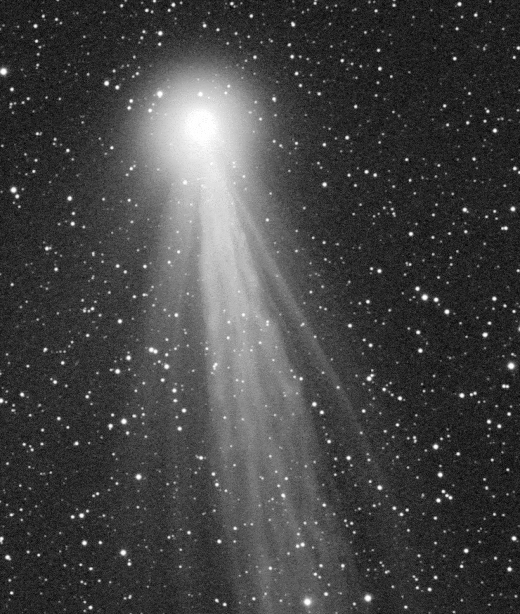#Comet 12P/Pons-Brooks has crossed the threshold of binocular visibility. "It is now a 6th-magnitude object," reports Michael Jaeger, who made this 1-hour animation on March 2nd:

This is an AI Free Zone! Text created by ChatGPT and other Large Language Models is spreading rapidly across the Internet. It's well-written, artificial, frequently inaccurate. If you find a mistake on Spaceweather.com, rest assured it was made by a real human being.
MARCH IS THE BEST MONTH OF THE YEAR FOR AURORAS: Did you know that March is the best month of the year for auroras? It's true. A 75-year study shows that March has more geomagnetically active days than any other month of the year. (October is a close second.) This is due to the Russell-McPherron effect. In short, cracks tend to form in Earth's magnetosphere during weeks around equinoxes, allowing solar wind to spark Northern Lights. Aurora alerts: SMS Text
COMET 12P IS COMING TO LIFE: With a new ice-geyser outburst on Feb. 29th, Comet 12P/Pons-Brooks has crossed the threshold of binocular visibility. "It is now a 6th-magnitude object," reports Michael Jaeger, who made this 1-hour animation on March 2nd:
"It was easy to see in my 6x30 viewfinder," he says. "The view reminded me of galaxy M13 with a 0.5° tail."
Comet 12P/Pons-Brooks is "cryovolcanic." Its surface is dotted with geysers which spew a mixture of liquid hydrocarbons and dissolved gasses when they are warmed by sunlight. There have been at least 6 significant eruptions since last December, one of them an incredible 5 magnitudes: light curve.
Right now, 12P is approaching the sun for a close encounter in April. Between now and then, forecasters expect 12P to brighten 10- to 15-fold, making it a naked-eye object at 3rd to 4th magnitude. This would be true even without any special geyser activity; the whole comet is sizzling as it approaches the sun. If any geysers do erupt in the weeks ahead, it could push the comet to even greater brightness.
Comet 12P has received a lot of attention because it could be visible during the April 8th solar eclipse. During totality, the comet will be close to Jupiter, both about 30 degrees from the eclipsed sun:
There are no comments yet.